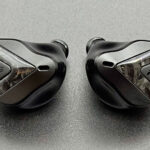Blog
Softears RSV-MKII Review — Headfonics

Nihal reviews the new Softears RSV-MKII, a 2nd-generation 5 BA driver IEM with an upgraded aluminum shell and improved tuning. It is currently priced at $699.
Disclaimer: This sample was sent to me in exchange for my honest opinion. Headfonics is an independent website with no affiliate links or services. I thank the team from Softears for their support.
Click here to read more about Softears products previously reviewed on Headfonics.
This article follows our latest scoring guidelines, which you can read in more detail here.
Softears has been busy lately. They started out with the release of the Softears Volume S earlier this year, after which we saw the release of Studio 2, tuned for studio professionals and stage artists.
At the SIAS 2025 show, they teased new versions of IEMs such as the RS10 and Cerberus, slated to be released in the near future.
Following the event, they released a new version of their widely acclaimed IEM, the RSV, which was originally launched in early 2021.
The RSV, which houses five balanced armature drivers, has been a well-regarded IEM for its enjoyable tuning.
Keeping the same driver configuration, Softears has done some re-engineering and introduced improvements, stating that the new $699 RSV-MKII is not just a refresh but an upgrade.
Has the new RSV-MKII design and sound signature kept pace with competing brand offerings such as the Yanyin Carmen, LETSHUOER’s Mystic 8, and THIEAUDIO’s Oracle MKIII?
Let’s dive in and see what the RSV-MKII has to offer in my full review below.


Features
The new RSV-MKII houses five balanced armature drivers, all from Knowles. For the low end, there are two Knowles CI series drivers employed. The midrange is handled by a Knowles ED driver, while for the high frequencies, the RSV-MKII uses a composite Knowles SWFK driver.
Softears has done some optimizations to these drivers to get the maximum out of them. The IEM has an upgraded 4-way crossover architecture with four independent acoustic tubes over the 3-way crossover found in the previous generation.
For enhancing the low-end response, Softears has designed a unique dual-bass tube design. The RSV-MKII also features Softears’ patented passive air-damping and dual-pressure relief systems inherited from their flagship RS10. This design helps relieve the ear canal from any air pressure buildup inside.
One final important note is that the RSV-MKII is rated as being very easy to drive and fairly sensitive at just 7Ω and 122 dB @1kHz SPL. In theory, the IEM is not going to extract much juice from your sources.


Design
RSV-MKII is built in an all-black theme, with the body made of medical-grade resin and the faceplate crafted from anodized aluminum alloy. The faceplate has a matte finish and is precisely shaped using CNC precision machining, giving it a robust build.
The V-shaped motif is made of carbon fiber and placed slightly off-centre on the faceplate. Within this motif, you can find the “RS” logo. Personally, I feel it has a minimal yet classy design.
The all-black theme, or rather the single-color scheme, carries an inherent elegance. The faceplate has a slightly shiny, glossy texture that adds to its appeal.
However, I do miss the gold foil accents from the earlier version of the RSV, which added a bit more dazzle under focused light.
Large vents can be seen on the edges of the faceplates, part of the newly added airflow pressure relief design that minimizes pressure buildup. The nozzle is slightly wide, but not enough to cause fit issues. It has an average length and a lip design to prevent ear tip slippage.
You can also see four sound tubes emerging from the nozzle, though without any mesh to block dirt or earwax. The IEM connects via a recessed 2-pin 0.78mm socket.
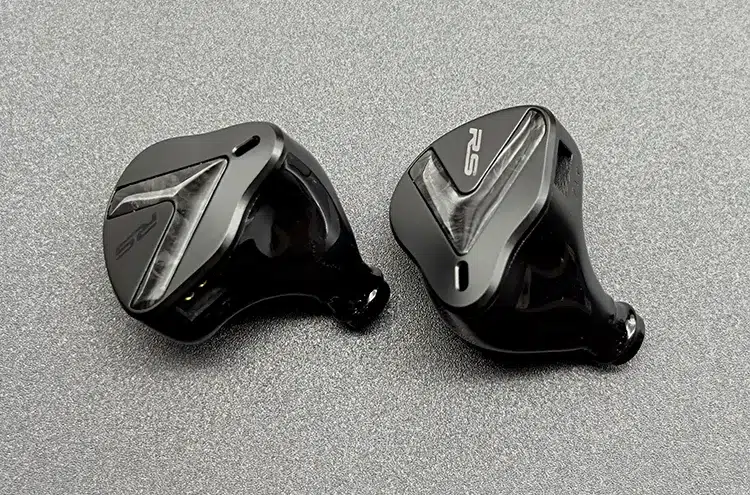

Comfort & Isolation
Comfort has never been an issue with most Softears IEMs. The shells here are a bit larger than the average-sized IEMs.
For me, the fit has been quite comfortable, one of the reasons being an ergonomic design with contours that follow the natural curves of the human ear.
It avoids any sharp edges or pressure points that could potentially cause any discomfort. There are rounded, smooth curves all around to help the IEM settle more naturally.
The shells are quite lightweight, reducing strain even during long sessions. They do stick out a little, even when fitted properly, but remain intact in their positions.
Overall, the design provides a secure fit, minimizing the need for frequent readjustments. If you have smaller ears, I don’t think the fit will be troublesome, though it’s always best to try them first.
Even when I am on the move, I do not feel any loosening or risk of them falling out. The isolation factor on the RSV-MKII is decent, blocking a fair amount of outside noise.
The pressure relief system minimizes pressure buildup inside the ear canal, which can often happen with poorly vented all-BA driver IEMs.
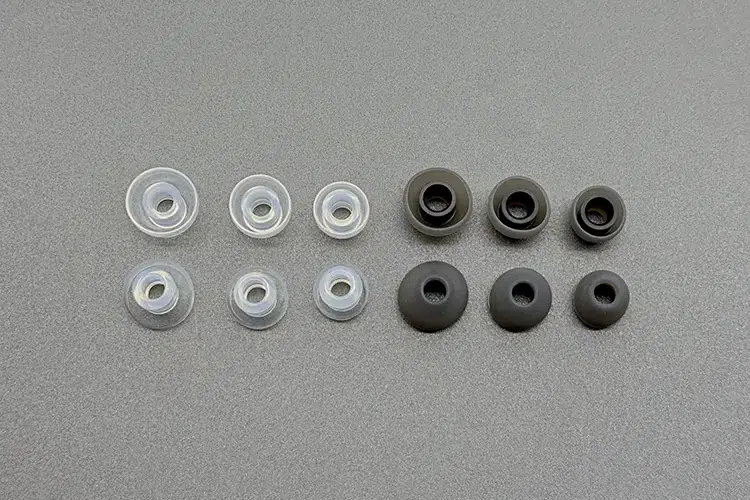

Ear Tips
Softears have always been generous with the ear tips they include with their IEMs. The RSV-MKII comes with two different types of ear tips: UC ear tips and Type-B ear tips.
UC ear tips have been a go-to choice for many people due to their soft and comfortable design. The other set of ear tips are regular silicone air tips with smaller stems and narrower bores, designed to provide a balanced tuning.
Personally, I like both sets, but I find the UC ear tips to be a little slippery, so I’m not a big fan of them, though I still recommend trying them with the IEMs. I also tried some aftermarket ear tips and found the Divinus Velvets to pair quite well.
Given the nozzle diameter and the ridge on it, ear tips with narrow stems can be tricky to push on, so fitting the Divinus ear tips took some effort. I prefer ear tips with wider stems since they fit more easily onto the nozzle.
In general, I would suggest using ear tips with a wider bore to keep the sound more open and airier. Narrow bores can limit the treble frequencies and make the sound a little dull.


Stock Cable
The Softears RSV-MKII comes with a high-quality cryogenically-treated pure copper cable designed to deliver cleaner and more accurate sound.
The cable is made from high-conductivity, oxygen-free copper, which the Softears team often uses on their other cables. Its core is built with 12 groups of 19 ultra-fine strands, each just 0.046mm thick, using 6N7 high-purity stranded copper.
The design uses a 19-strand “reverse twist” configuration, which reduces resistance and signal loss while keeping current flow stable.
The twisted structure also cancels out unwanted inductive effects, lowers noise, and improves high-frequency detail, giving off a cleaner and more natural sound delivery.
The cable’s handling is quite easy, though you can expect some tangling when rolling it up. I particularly like the hardware, as it feels very durable and has substantial sizing.
The 4.4mm adapter, splitter, and 2-pin connector follow the same design scheme, finished in black. You’ll find a Softears logo on the termination adapter and an “RS” logo on the y-split.
The cable performs very well and doesn’t demand a swap. Additionally, a 3.5mm male to 4.4mm female adapter is included, carrying the same design and build quality, covering you for a wider range of sources.
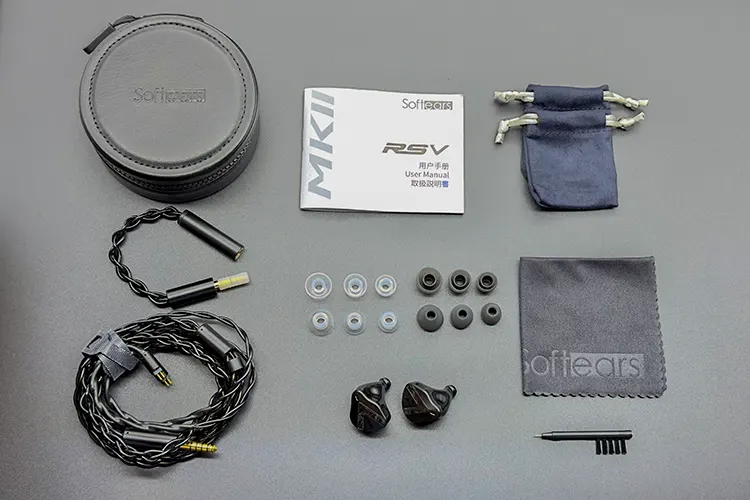

Packaging & Accessories
The RSV-MKII comes in a small matte-black box that keeps things understated until the bright-orange racing stripe catches your eye in the corner. That little flash of color raises enough curiosity and is the only clue that something special is waiting inside.
Opening the lid, you find the IEMs neatly arranged in front, sitting in a soft foam cutout. The remainder of the cable is coiled and placed beneath this section.
Lift the foam, and everything else is tucked neatly underneath. The cable is coiled in a tidy spiral and placed in the cutout again. Removing this section, you find the accessories packet.
This packet holds all the extras, such as packs of ear tips, a 3.5mm male to 4.4mm female adapter, a soft cleaning cloth, a cleaning brush, a user manual, and my favorite of all, two small IEM pouches. As the last part of the unboxing, the carry case is found underneath this packet.
Going through the inclusions, I do not feel Softears missed anything. It’s a rather compact and keep-it-clean packaging that still carries a premium touch.
There may be grander packaging at this price point, but in terms of accessories, the RSV-MKII sits at the top of the list.
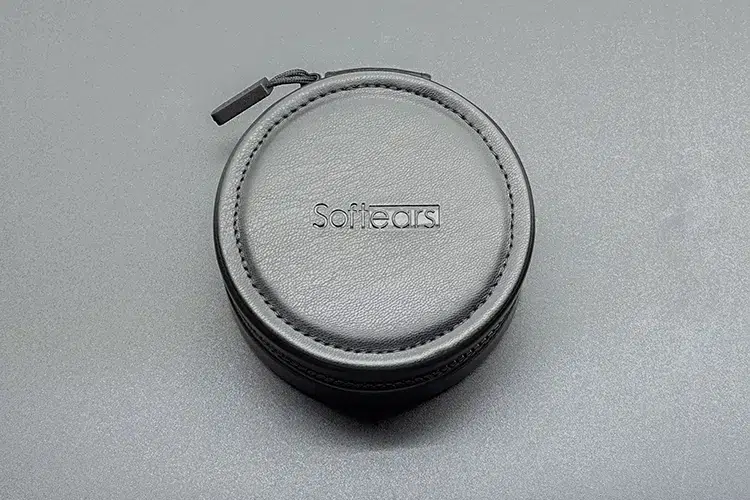

Carry Case
The zippered carry case has a compact, round design that matches the overall design scheme. The branded exterior is finished in black leather with neat stitching and a clean, minimal look.
Inside, the case is lined with a soft, suede-like material that adds secure storage. There is a mesh pocket on the inner part of the top lid where you can store ear tips and small accessories.
I like the design and build of this case, and the fact that there are minimal pasting and more stitching makes it more durable. Both the top and base of the case are firm and structured, likely reinforced with hard cardboard or a thin wooden lining.
This, however, takes up some space. The case is sturdy enough for daily use and compact enough for travel. The problem, however, is that it lacks enough space inside to comfortably store the IEMs along with the cable.
I wonder why brands do not pay attention to the fact that users would like to store their IEMs more comfortably. I would even give up a few accessories in favor of a larger carry case.
Click on page 2 below for my sound impressions and recommended pairings.
Click on page 3 below for my selected comparisons.

